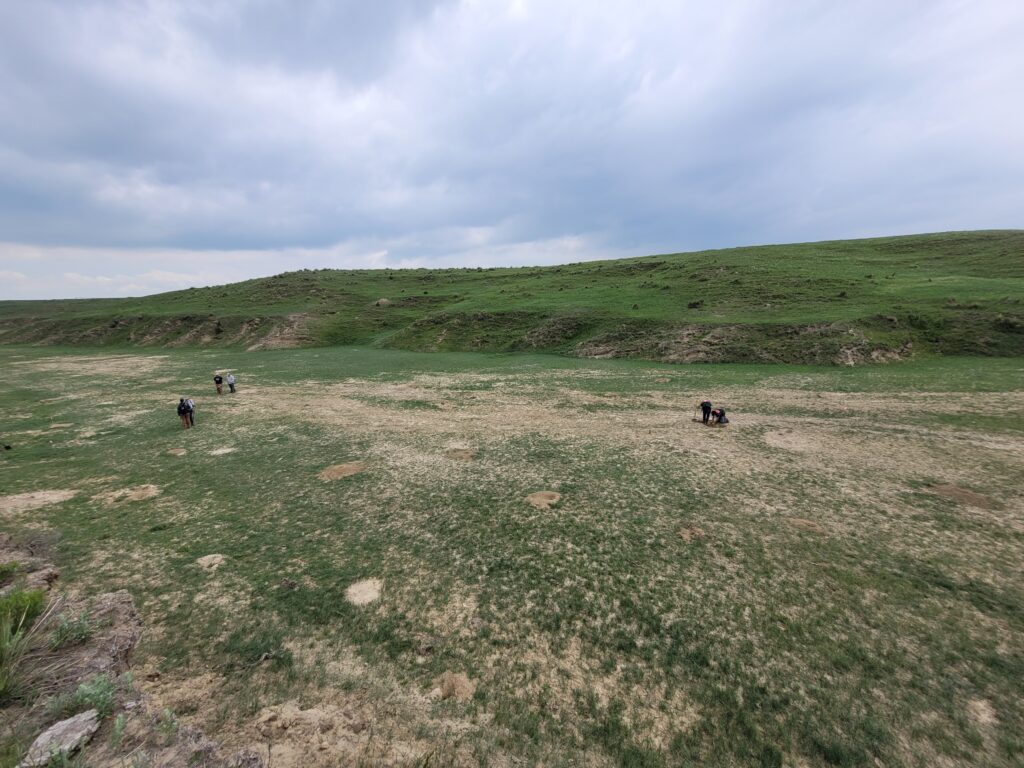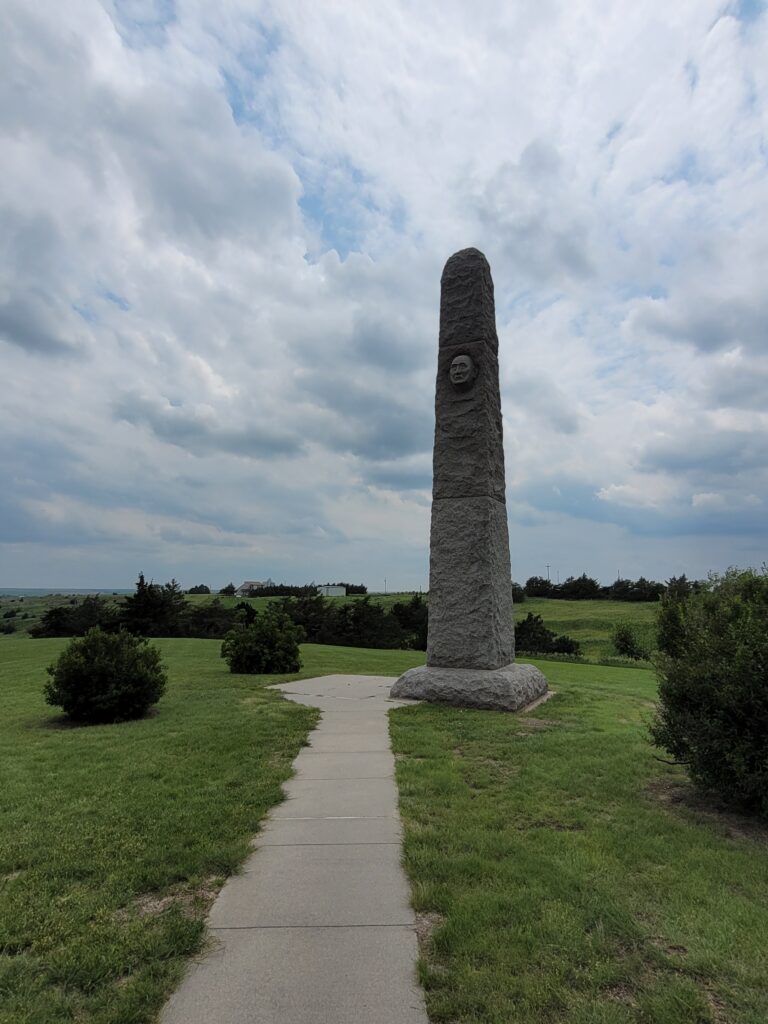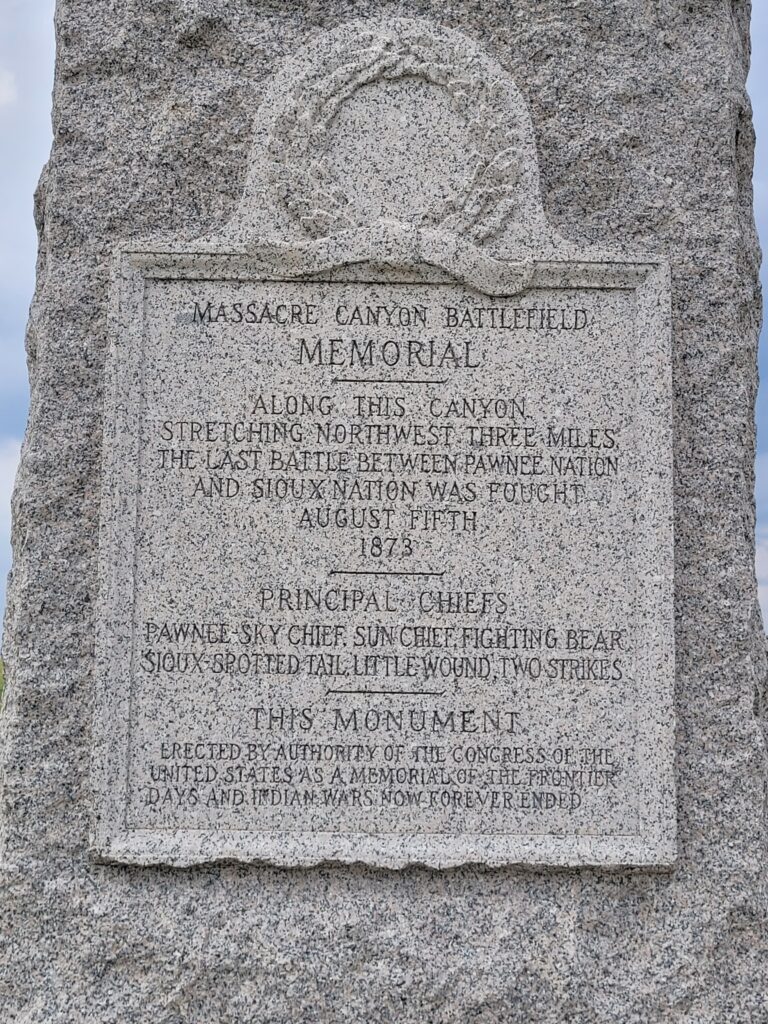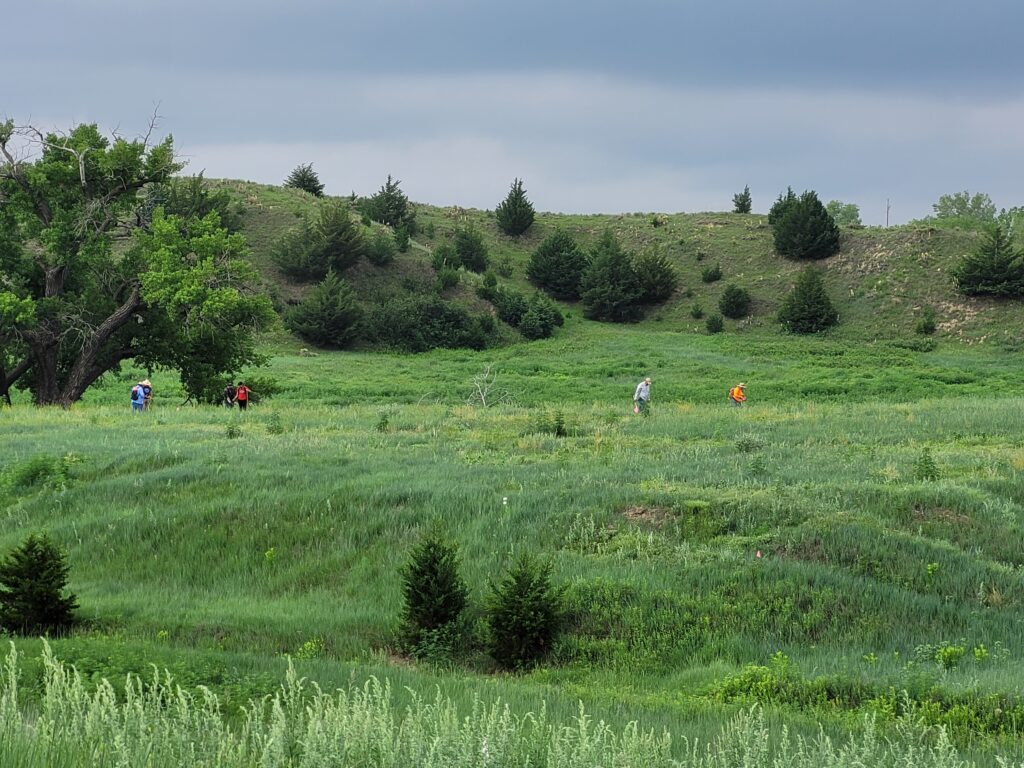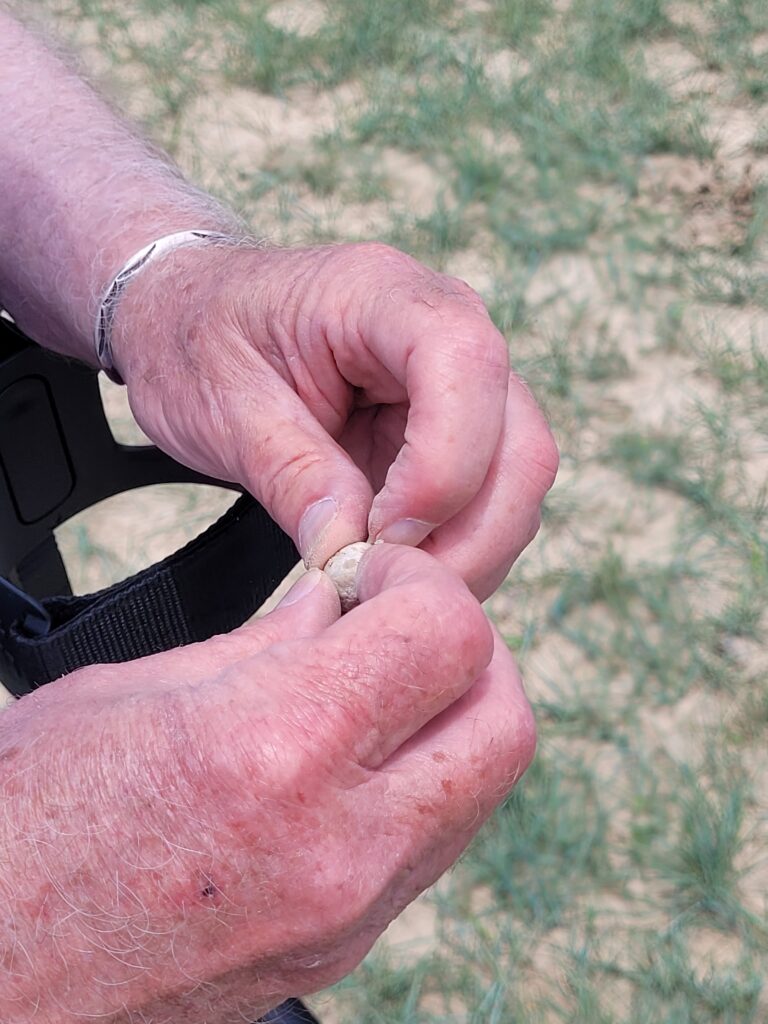By Matt Reed, Pawnee Tribal Historic Preservation Officer, and Dave Williams, Nebraska State Archeologist
In the spring of 2021, discussions arose between the Nebraska State Historic Preservation Office (NeSHPO), Nebraska State Archeology Office (SAO), and Pawnee Nation of Oklahoma about an archeological project using federal Historic Preservation Fund (HPF) money administered through the NeSHPO. During a conversation between the Pawnee Nation Tribal Historic Preservation Office, NeSHPO, and State Archeology Office (SAO), it became apparent that Massacre Canyon is the single most important Nebraska cultural site to the tribe and they would like it to be the focus of a multifaceted archeological project.
While the attack at Massacre Canyon is a well-known event, in reality, we have very little specific information about what took place and where. The resulting project, called the Massacre Canyon Oral Tradition and Archeology Project, is a collaborative effort involving the SAO, the Pawnee Nation of Oklahoma, the NeSHPO, prominent battlefield archeologist Dr. Douglas Scott, Samaritan Detection Dogs, LLC, (SDD) out of Ames, Iowa, and members of the public.
In August of 1873, events transpired at what would become known as Massacre Canyon in Hitchcock County. In July of 1873, a bison hunting party of 450 Pawnee men, women, and children set out from the Pawnee Reservation near modern Genoa toward northwestern Kansas and the Republican River in southwest Nebraska. After a month of successfully hunting 655 bison, the party reached the canyon and set up camp near present-day Culbertson to carry out one last hunt before returning home. On the morning of August 5, 1873, a large force of Oglala and Brule Lakota, who greatly outnumbered the Pawnee, ambushed the hunters with no warning. Pawnee chief, Sky Chief was among the first killed as he butchered a bison above the canyon.
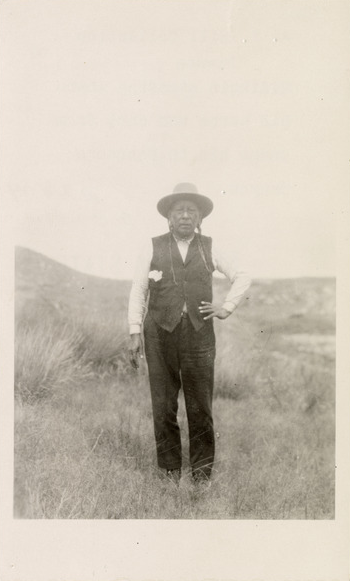
Ridingin [sic] standing where his horse was shot from under him in Massacre Canyon, in 1930. RG3562-g005i0015
As many as 150 Pawnee warriors, including Curly Chief, Riding In, and Ruling His Son, among others, held off the attacking Lakota and sent the women, children, and horses into the six-mile-long canyon to flee toward the Republican River. At the end of the day, at least 75 Pawnees, and perhaps double that number, were killed and left within and atop the canyon walls. The slaughtered Pawnees at Massacre Canyon were buried in place within the canyon, while survivors returned to Genoa on foot and by railroad. Within less than a year, the Pawnees left their homeland of Nebraska for a reservation in Indian Territory in Oklahoma.
A monument to the massacre was constructed with federal government assistance and dedicated in September 1930. Massacre Canyon was listed in the National Register of Historic Places in 1974. Today, 150 years later, Massacre Canyon remains the single most important Nebraska cultural site to the Pawnee Nation.
Over the past year, the initial phases of the Massacre Canyon Oral Tradition and Archeology Project have been carried out. Archival documents, including manuscripts, photographs, Indian Agency ledgers, and more, have been synthesized and digitized to gain a more comprehensive set of information about the battle. In May 2023, the authors conducted oral interviews with several citizens of the Pawnee Nation who are descendants of families who experienced the battle at Massacre Canyon, and who have learned and been told histories about Massacre Canyon through the decades.
In June 2023, two weeks of fieldwork were completed. Participants included Pawnee Nation Tribal Historic Preservation Officer Matt Reed, several citizens of the Pawnee Nation, SAO staff, Dr. Scott, and Jim Peters with SDD. Massacre Canyon is entirely within private lands so access to portions of the canyon was graciously allowed by local landowners. During the survey, the team covered over 1,500 acres and identified scattered evidence of the battle, including lead bullets, cartridge casings, and other metal objects. Analysis of the artifacts is ongoing, and additional field investigation is pending. A comprehensive report and updated National Register of Historic Places nomination form will be produced with the project results.
For more information about the events of Massacre Canyon, see Nebraska History Volume 16, Issue 3 (1935), and Paul Riley’s article on “The Battle of Massacre Canyon” in Nebraska History Volume 54, Issue 2 (1973).
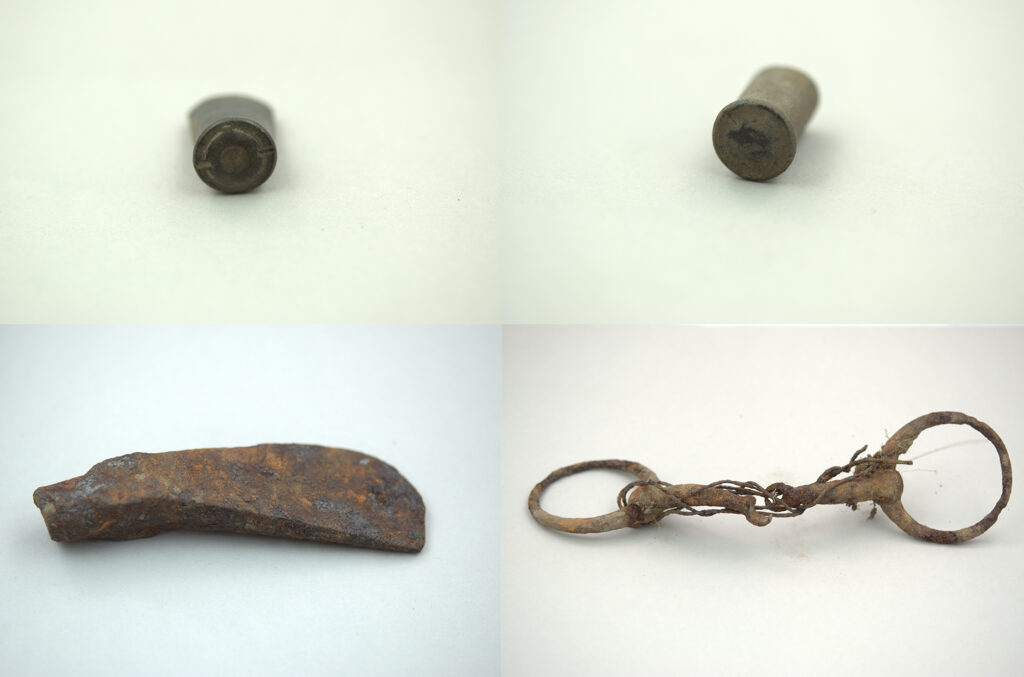
A selection of artifacts identified within Massacre Canyon that are likely directly associated with the 1873 battle.

